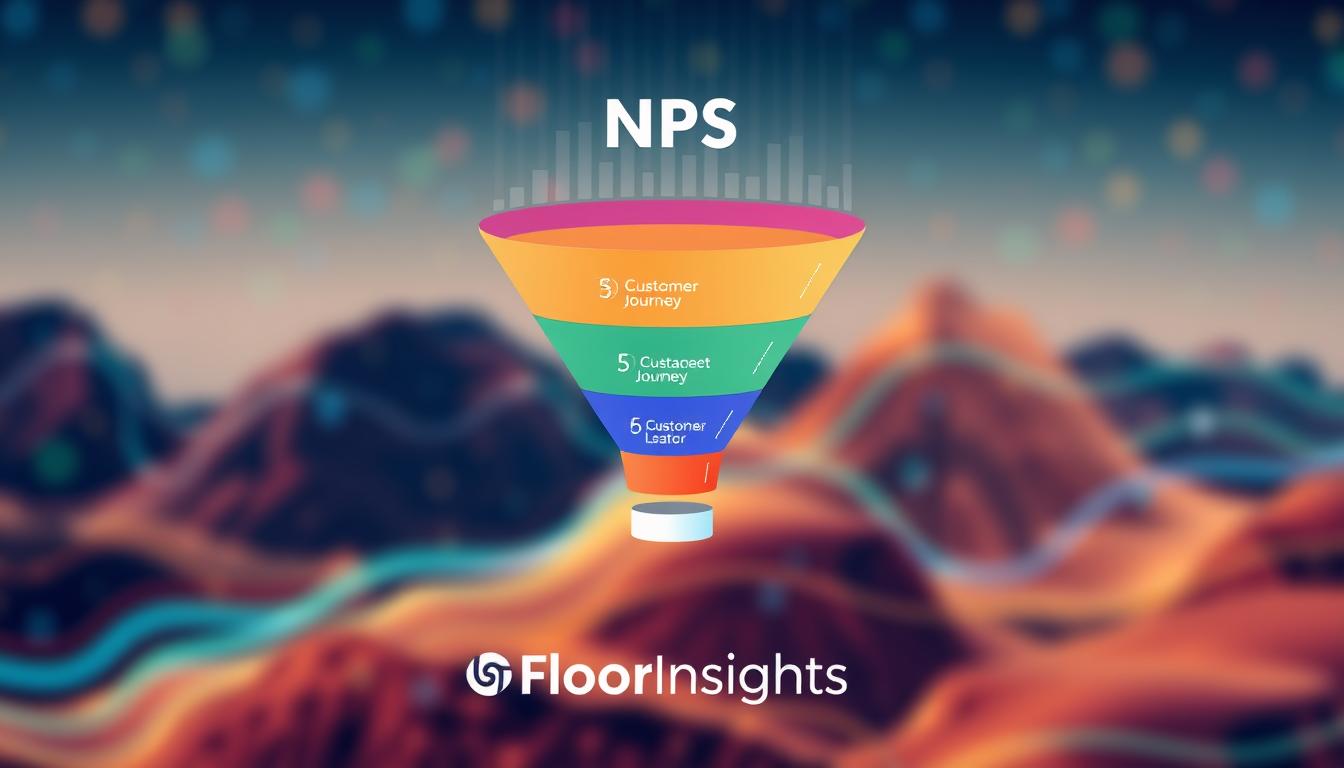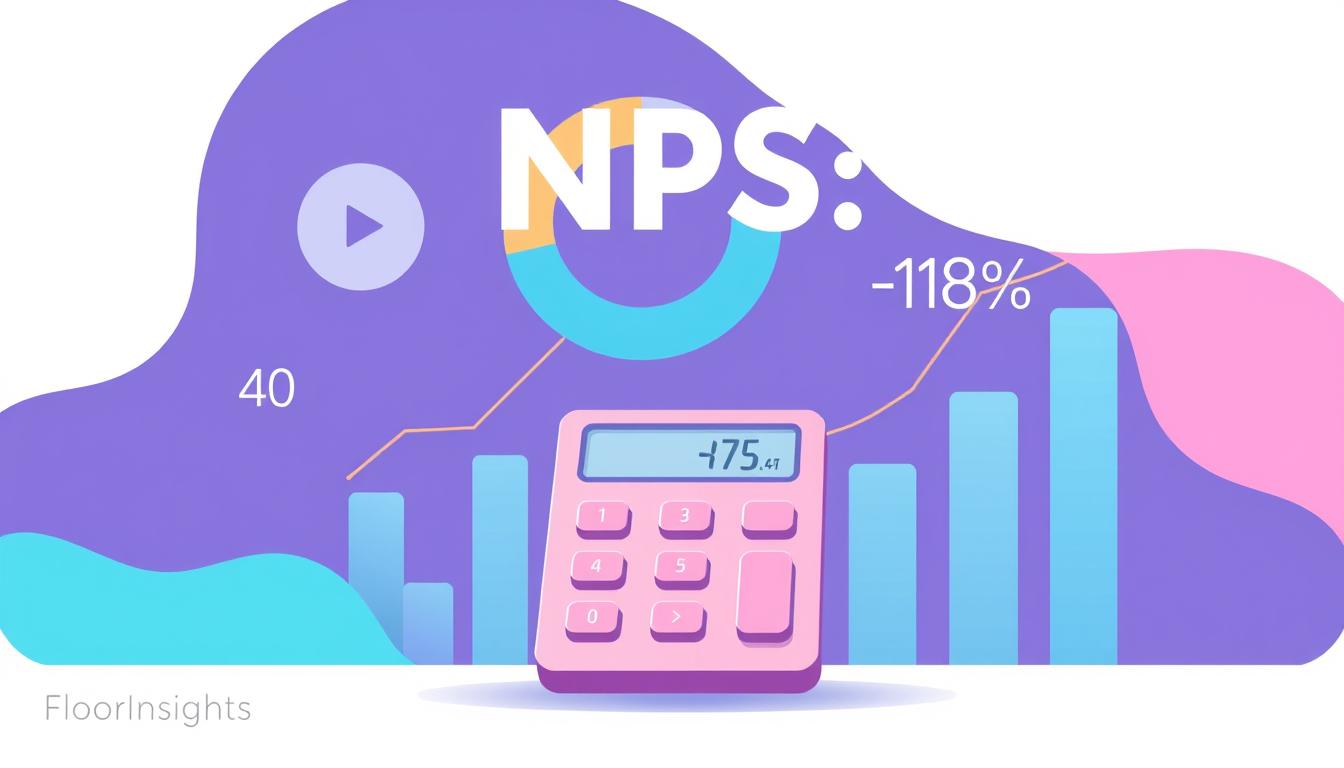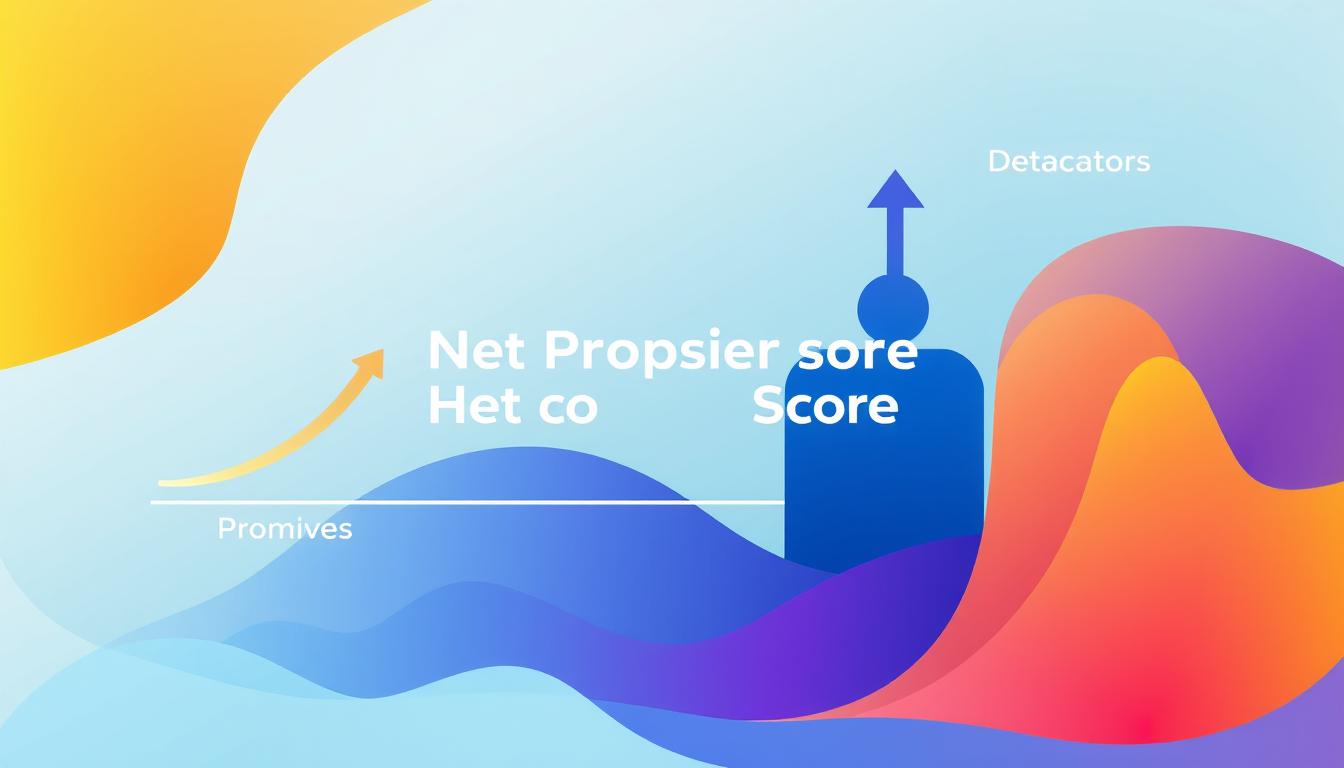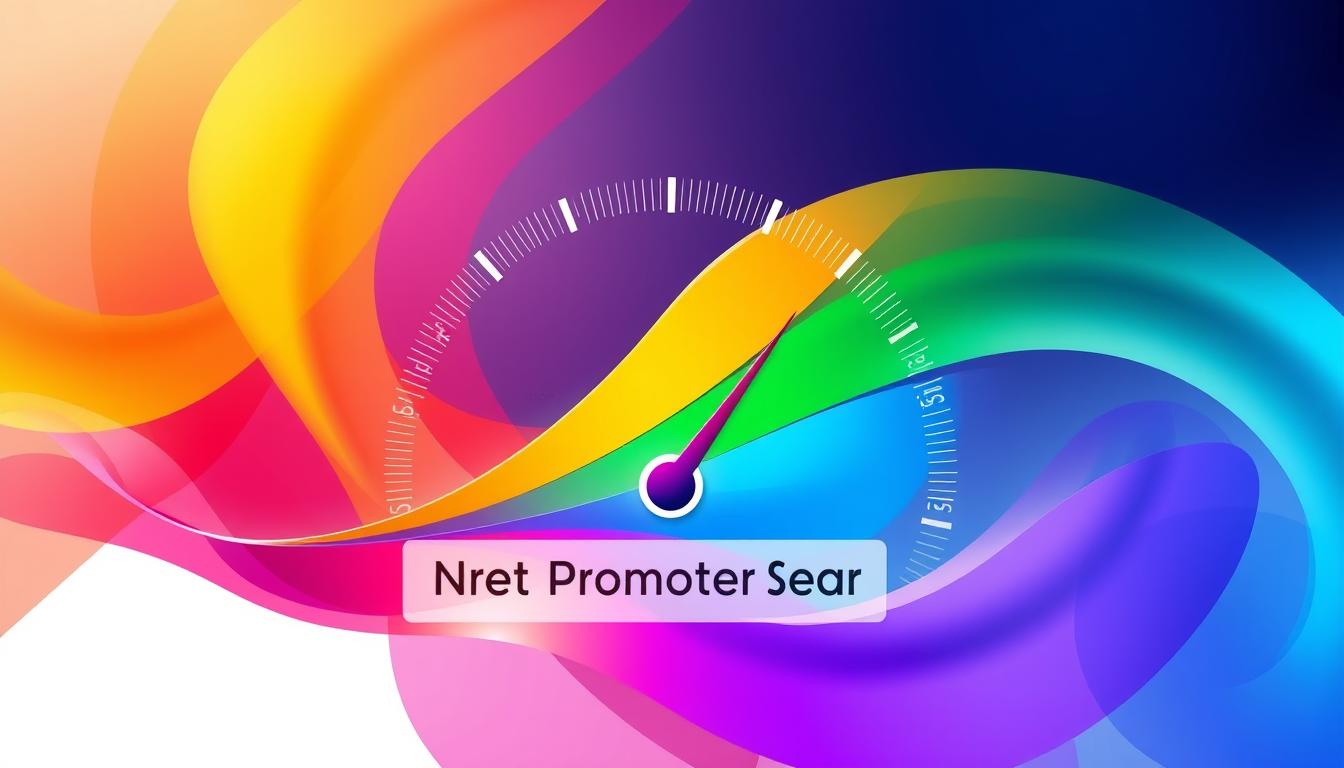In today’s competitive business landscape, customer loyalty is the key to long-term success. Retaining valuable customers is crucial, as acquiring new ones can be significantly more costly. One powerful metric that can help us identify high-risk churn customers is the Net Promoter Score (NPS). By analyzing NPS data, we can gain valuable insights into customer sentiment and proactively address the needs of those at risk of leaving.
Key Takeaways
- Net Promoter Score (NPS) is a widely-used metric for measuring customer loyalty and predicting churn.
- Low NPS scores can be an early warning sign of high-risk churn customers.
- Analyzing customer feedback and sentiment data can help identify the root causes of customer dissatisfaction.
- Engaging with detractor and passive customers is crucial for improving customer experience and reducing churn.
- Integrating NPS data into customer relationship management (CRM) can enable targeted retention campaigns.
What is Net Promoter Score?
Net Promoter Score (NPS) is a widely-used metric that measures customer loyalty and satisfaction. It is based on a simple question: “How likely are you to recommend our company/product/service to a friend or colleague?” Customers respond on a scale of 0 to 10, and their responses are then categorized into three groups: Promoters (9-10), Passives (7-8), and Detractors (0-6).
Understanding the Net Promoter Score Metric
The NPS is calculated by subtracting the percentage of Detractors from the percentage of Promoters. This provides a score ranging from -100 to 100, with a higher score indicating a greater level of customer loyalty and advocacy. A positive NPS is generally considered a good result, while a negative NPS suggests that the company has more detractors than promoters.
Calculating NPS from Customer Feedback
To calculate the Net Promoter Score, businesses collect customer feedback through surveys or other channels. The key question is asked, and customers provide their response on the 0-10 scale. The percentages of Promoters, Passives, and Detractors are then calculated, and the NPS is determined by subtracting the percentage of Detractors from the percentage of Promoters.
| Customer Response | Category | Calculation |
|---|---|---|
| 9-10 | Promoters | % of Promoters |
| 7-8 | Passives | % of Passives |
| 0-6 | Detractors | % of Detractors |
The Net Promoter Score is then calculated as: NPS = % of Promoters – % of Detractors.
The Importance of Customer Loyalty
Building and maintaining a loyal customer base is paramount for the long-term success of any business. Loyal customers not only generate consistent revenue through repeat purchases but also become powerful brand advocates, promoting your products or services to their extended network. By deeply understanding and addressing the unique needs of our customers, we can cultivate strong, lasting relationships that lead to increased customer lifetime value and reduced churn.
Customer loyalty is directly linked to both customer satisfaction and customer experience. When we provide an exceptional experience that exceeds customer expectations, they become more inclined to continue doing business with us and recommend our offerings to others. Fostering this loyalty is a key driver of sustainable growth and profitability.
“Loyal customers are the foundation of a successful business. They not only generate consistent revenue but also become ambassadors for your brand, driving new customer acquisition through positive word-of-mouth.”
To harness the power of customer loyalty, we must continuously monitor and analyze customer feedback, identify areas for improvement, and swiftly address any pain points. By doing so, we can enhance the overall customer experience and strengthen the bond between our brand and our loyal customer base.
In the following sections, we will explore the various strategies and best practices for leveraging customer loyalty to drive long-term business success. From understanding the Net Promoter Score (NPS) to engaging with detractors and promoters, we’ll uncover how to build a thriving, loyal customer base that propels your organization forward.
Signs of High-Risk Churn Customers
As businesses strive to retain their valuable customers, it’s crucial to identify early warning signs of high-risk churn. By monitoring customer feedback and behavior, we can proactively address the needs of those who may be on the verge of abandoning our products or services.
Low NPS Scores as an Early Warning
One of the most telling indicators of potential churn is a low Net Promoter Score (NPS). Customers who are less likely to recommend your brand, known as “Detractors,” often signal a higher likelihood of customer churn. Keeping a close eye on your NPS, particularly the feedback from Detractors, can help you pinpoint areas of concern and take swift action to improve customer retention.
Other Indicators of Churn Risk
In addition to low NPS scores, other signs of high-risk churn customers may include:
- Decreased engagement with your brand, such as reduced website visits or fewer interactions on social media
- Negative sentiment expressed in customer sentiment analysis and online reviews
- Decreased usage or purchase frequency, indicating a waning interest in your products or services
By closely monitoring these metrics and insights, businesses can proactively identify and address the needs of customers who may be at risk of churning, ultimately enhancing their customer retention efforts.
“Identifying high-risk churn customers early on is crucial for maintaining a healthy, engaged customer base.”
Leveraging NPS for Customer Retention
By harnessing the power of Net Promoter Score (NPS) data, businesses can gain invaluable insights into customer sentiment and identify the root causes of customer dissatisfaction. Through a comprehensive analysis of NPS scores, customer comments, and other feedback, organizations can uncover patterns and pain points that allow them to proactively address the needs of high-risk churn customers and implement targeted retention strategies.
Analyzing Customer Sentiment Data
A robust customer sentiment analysis, powered by NPS data, enables businesses to delve deep into the drivers of customer loyalty and identify areas for improvement. By closely examining NPS scores, companies can pinpoint the specific factors that influence customer retention, such as product quality, customer service, and overall brand experience. This granular understanding of customer sentiment serves as a roadmap for developing effective retention strategies.
| Metric | Explanation | Implication for Customer Retention |
|---|---|---|
| Net Promoter Score (NPS) | A measure of customer loyalty, ranging from -100 to 100, based on the likelihood of customers to recommend a product or service to others. | Low NPS scores can indicate a heightened risk of customer churn, prompting the need for proactive customer retention efforts. |
| Customer Comments | Qualitative feedback provided by customers in NPS surveys, offering valuable insights into their experiences and pain points. | Analyzing customer comments can help identify specific areas for improvement and guide the development of targeted retention strategies. |
| Customer Sentiment Analysis | A detailed examination of the emotional tone and sentiment expressed in customer feedback, including NPS survey responses. | Understanding the underlying emotions and sentiment of customers can help businesses tailor their retention efforts to address their specific needs and concerns. |
By leveraging this rich customer sentiment data, businesses can gain a comprehensive understanding of the factors that influence customer loyalty and retention. This knowledge serves as a powerful foundation for developing effective strategies to retain high-value customers and foster long-term brand advocacy.
Monitoring customer sentiment through NPS data is crucial for identifying and addressing the pain points that can lead to customer churn. It’s a strategic imperative for any business that values long-term customer relationships.”
Net Promoter Score and Customer Satisfaction
Establishing a strong connection between customer satisfaction and Net Promoter Score (NPS) is crucial for businesses striving to enhance their overall customer experience. NPS is not merely a metric; it serves as a powerful indicator of how likely customers are to recommend your products or services to others. By understanding this relationship, we can develop strategies to boost customer satisfaction and drive higher levels of loyalty and advocacy.
Customer satisfaction is the foundation upon which customer loyalty is built. When customers are satisfied with their experiences, they are more inclined to become loyal advocates, actively promoting your brand to their peers. NPS, as a measure of this advocacy, provides valuable insights into the overall sentiment and satisfaction of your customer base.
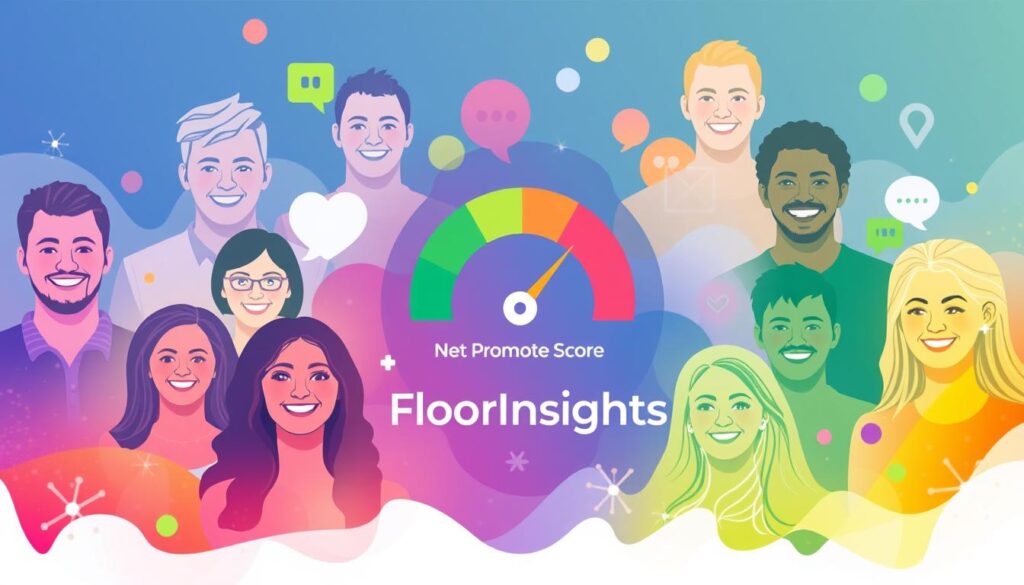
By analyzing NPS data, we can identify areas where customer satisfaction is high or low, enabling us to tailor our efforts to address pain points and enhance the overall customer experience. This, in turn, can lead to increased customer retention, reduced churn, and the cultivation of a loyal customer base that actively promotes your brand.
Ultimately, the connection between NPS and customer satisfaction is a symbiotic one. By focusing on improving customer satisfaction, we can positively impact NPS, and by leveraging NPS insights, we can make informed decisions to enhance the customer experience. This holistic approach is the key to driving lasting customer loyalty and advocacy.
Implementing an Effective NPS Survey
Conducting an effective NPS (Net Promoter Score) survey is crucial for gathering accurate and actionable customer feedback. By following best practices, we can maximize response rates and gain valuable insights into customer sentiment and loyalty.
Best Practices for NPS Surveys
To implement an effective NPS survey, consider the following best practices:
- Keep it concise: Ensure the survey is brief and easy to complete, typically no more than 3-5 questions.
- Time it right: Send the survey at the optimal time, such as after a customer interaction or purchase, to capture their immediate feedback.
- Make it accessible: Offer multiple survey channels, including mobile-friendly options, to increase accessibility and response rates.
- Analyze customer sentiment: Leverage text analytics and natural language processing to understand the sentiment behind customer responses.
- Act on insights: Respond promptly to customer feedback, addressing any issues or concerns to improve the overall customer experience.
By implementing these best practices, you can conduct an effective NPS survey that provides valuable customer feedback and insights into customer sentiment analysis.
The true value of an NPS survey lies in the actionable insights it provides, enabling organizations to make data-driven decisions and enhance the customer experience.”
| Best Practice | Description | Benefits |
|---|---|---|
| Concise Survey | Keep the survey short and focused | Improves response rates and customer engagement |
| Timely Delivery | Send the survey at the optimal time | Captures immediate feedback and relevant insights |
| Accessible Channels | Offer multiple survey channels | Increases accessibility and reach to diverse customer segments |
| Sentiment Analysis | Leverage text analytics and natural language processing | Provides deeper understanding of customer sentiment and pain points |
| Prompt Action | Respond quickly to customer feedback | Demonstrates responsiveness and a commitment to improving the customer experience |
Engaging Detractors and Passive Customers
Addressing the concerns of detractors and passive customers is essential for improving customer experience and reducing customer churn. By proactively engaging these customer segments, understanding their pain points, and implementing strategies to enhance their overall experience, we can turn them into loyal promoters and strengthen our customer relationships.
Strategies for Improving Customer Experience
To effectively engage detractors and passive customers, we must adopt a customer-centric approach and prioritize improving their customer experience. Here are some key strategies to consider:
- Actively solicit feedback: Encourage detractors and passive customers to share their feedback, concerns, and suggestions. This can be done through targeted surveys, one-on-one interviews, or online forums.
- Respond promptly and empathetically: When customers express dissatisfaction, address their issues quickly and with genuine empathy. Demonstrate that their feedback is valued and that you are committed to resolving their problems.
- Implement process improvements: Analyze the customer sentiment analysis data to identify the root causes of customer dissatisfaction. Then, implement targeted process improvements to address these pain points and enhance the overall customer experience.
- Personalize interactions: Tailor your communication and engagement efforts to the unique needs and preferences of each customer. This can help build stronger relationships and foster a sense of appreciation and loyalty.
- Offer incentives and rewards: Consider providing detractors and passive customers with special offers, discounts, or rewards to encourage their continued business and loyalty.
By adopting these strategies, you can effectively engage detractors and passive customers, address their concerns, and transform them into loyal promoters who actively advocate for your brand.
“The best customer experiences are built on understanding and empathy, not just transactions.”
Building Customer Advocacy with Promoters
At the heart of a successful customer advocacy program lies our Promoters – those loyal customers who are highly likely to recommend our product or service. By nurturing and engaging these Promoters, we can encourage them to become active brand ambassadors, further driving customer acquisition and loyalty.
Promoters are the foundation of customer advocacy. These are the customers who have had a positive experience with our brand and are eager to share their enthusiasm with others. By empowering our Promoters, we can tap into their influence and harness their customer loyalty to cultivate new business opportunities.
To build a thriving customer experience and advocacy program, we must first identify our Promoters. This can be done through regular Net Promoter Score (NPS) surveys, which measure customer sentiment and willingness to recommend our offerings. Once we’ve identified our Promoters, we can implement targeted strategies to nurture and engage them, such as:
- Providing exclusive perks, rewards, or early access to new products
- Inviting Promoters to participate in beta testing or product development
- Featuring Promoters in case studies, testimonials, or social media campaigns
- Recognizing and celebrating Promoters’ loyalty and advocacy
By cultivating strong relationships with our Promoters, we can transform them into powerful brand advocates who generate valuable word-of-mouth referrals and help us acquire new customers. This, in turn, can lead to increased customer loyalty and a strengthened overall customer advocacy program.
“Loyal customers, they don’t just come back, they don’t simply recommend you, they insist that their friends do business with you.” – Chip Bell
By nurturing our Promoters and harnessing their enthusiasm, we can create a virtuous cycle of customer loyalty and advocacy that drives sustainable growth for our business.
Integrating NPS into Customer Relationship Management
Integrating Net Promoter Score (NPS) data into our customer relationship management (CRM) system is a powerful way to build a comprehensive understanding of customer sentiment and behavior. By leveraging NPS insights, we can tailor our marketing campaigns and customer outreach efforts to address the unique needs of at-risk customers, fostering stronger, more resilient relationships.
Using NPS Data for Targeted Campaigns
When we have a clear picture of our customers’ NPS scores, we can segment our audience and develop targeted campaigns to address their specific concerns. For instance, customers with low NPS scores may require more personalized attention and proactive outreach to address their pain points and improve their overall experience. Conversely, high-scoring promoters can be nurtured to become brand advocates, further driving customer retention and referrals.
By aligning our customer relationship management strategies with NPS data, we can create more relevant and impactful messaging, ultimately enhancing our ability to retain valuable customers and foster long-term customer loyalty.
| NPS Score Range | Customer Segment | Recommended Strategies |
|---|---|---|
| 9-10 (Promoters) | Loyal, Enthusiastic Customers | Encourage referrals, leverage for advocacy |
| 7-8 (Passives) | Satisfied, but Vulnerable Customers | Engage to improve experience, address concerns |
| 0-6 (Detractors) | Unhappy, High-Risk Customers | Prioritize outreach, resolve issues, mitigate churn |
By integrating Net Promoter Score into our customer relationship management practices, we can unlock powerful insights that inform our retention strategies and ultimately drive long-term business success.
Continuous Improvement with Net Promoter Score
Leveraging the Net Promoter Score as a continuous improvement tool allows us to monitor and enhance the customer experience over time. By regularly collecting and analyzing NPS data, we can identify areas for improvement, measure the impact of our interventions, and make data-driven decisions to strengthen customer loyalty and advocacy.
Customer sentiment analysis through the NPS metric provides valuable insights into how our customers perceive our products or services. These insights can inform targeted improvements to the customer experience, addressing pain points and addressing the needs of our detractor and passive customers. By consistently measuring and acting on NPS, we can foster a customer-centric culture and drive sustainable growth.
Integrating Net Promoter Score into our continuous improvement process ensures that we maintain a pulse on customer sentiment and continually refine our strategies to deliver exceptional experiences. This ongoing commitment to enhancement positions us as a customer-focused organization, dedicated to exceeding the expectations of those we serve.
FAQ
What is Net Promoter Score?
Net Promoter Score (NPS) is a widely used metric that measures customer loyalty and satisfaction. It is based on a simple question: “How likely are you to recommend our company/product/service to a friend or colleague?” Customers respond on a scale of 0 to 10, and their responses are then categorized into three groups: Promoters (9-10), Passives (7-8), and Detractors (0-6). The NPS is calculated by subtracting the percentage of Detractors from the percentage of Promoters.
How is NPS calculated from customer feedback?
To calculate NPS, we first categorize customer responses into three groups: Promoters (9-10), Passives (7-8), and Detractors (0-6). We then subtract the percentage of Detractors from the percentage of Promoters. This gives us the overall NPS score, which can range from -100 to 100.
Why is customer loyalty important?
Maintaining a loyal customer base is crucial for the long-term success of any business. Loyal customers not only generate repeat business but also become brand advocates, promoting your products or services to their network. By understanding and addressing the needs of customers, we can cultivate a strong and lasting relationship, leading to increased customer lifetime value and reduced churn.
What are the signs of high-risk churn customers?
By monitoring customer feedback and behavior, we can identify early warning signs of high-risk churn customers. Low NPS scores, particularly from Detractors, can signal dissatisfaction and a higher likelihood of abandoning your product or service. Other indicators of churn risk may include decreased engagement, negative sentiment in customer reviews, and decreased usage or purchase frequency.
How can we leverage NPS for customer retention?
By leveraging NPS data, we can gain valuable insights into customer sentiment and identify the root causes of customer dissatisfaction. By analyzing NPS scores, customer comments, and other feedback, we can uncover patterns and pain points that allow us to proactively address the needs of high-risk churn customers and implement targeted retention strategies.
What is the relationship between NPS and customer satisfaction?
NPS is closely tied to customer satisfaction, as it measures the likelihood of a customer recommending your product or service. By understanding the relationship between NPS and customer satisfaction, we can develop strategies to improve the overall customer experience and drive higher levels of loyalty and advocacy.
What are the best practices for conducting an effective NPS survey?
Conducting an effective NPS survey is crucial for gathering accurate and actionable customer feedback. By following best practices, such as ensuring the survey is concise, easily accessible, and timely, we can maximize response rates and gain valuable insights into customer sentiment and loyalty.
How can we engage Detractors and Passive customers?
Addressing the concerns of Detractors and Passive customers is essential for improving customer loyalty and reducing churn. By proactively engaging these customer segments, understanding their pain points, and implementing strategies to enhance their overall experience, we can turn them into loyal Promoters and strengthen our customer relationships.
How can we build customer advocacy with Promoters?
Promoters, those customers who are highly likely to recommend your product or service, are the foundation of customer advocacy. By nurturing and engaging our Promoters, we can encourage them to become active brand ambassadors, further driving customer acquisition and loyalty.
How can we integrate NPS into our customer relationship management (CRM) system?
Integrating NPS data into our customer relationship management (CRM) system allows us to build a comprehensive understanding of customer sentiment and behavior. By using NPS data to inform targeted marketing campaigns and customer outreach, we can more effectively address the needs of at-risk customers and foster stronger, more resilient customer relationships.
How can we use NPS for continuous improvement?
Leveraging Net Promoter Score as a continuous improvement tool allows us to monitor and enhance the customer experience over time. By regularly collecting and analyzing NPS data, we can identify areas for improvement, measure the impact of our interventions, and make data-driven decisions to strengthen customer loyalty and advocacy.
Related Posts
- How NPS Helps Inform Personalized Customer Experiences – NPS and Personalization
- How NPS Drives Content Marketing Strategies
- The Role of NPS in Assessing Digital Product Performance – NPS in Digital Transformation
- Using eNPS Data to Improve Internal Communication
- Using NPS to Measure Franchisee Satisfaction and Success – NPS for Franchise Businesses
- Using NPS to Measure the Success of a New Product Launch – NPS and Product Launches
- How NPS Can Help Identify eCommerce Website Issues – NPS and eCommerce
- The Role of NPS in Measuring Post-Purchase Satisfaction – NPS and eCommerce

